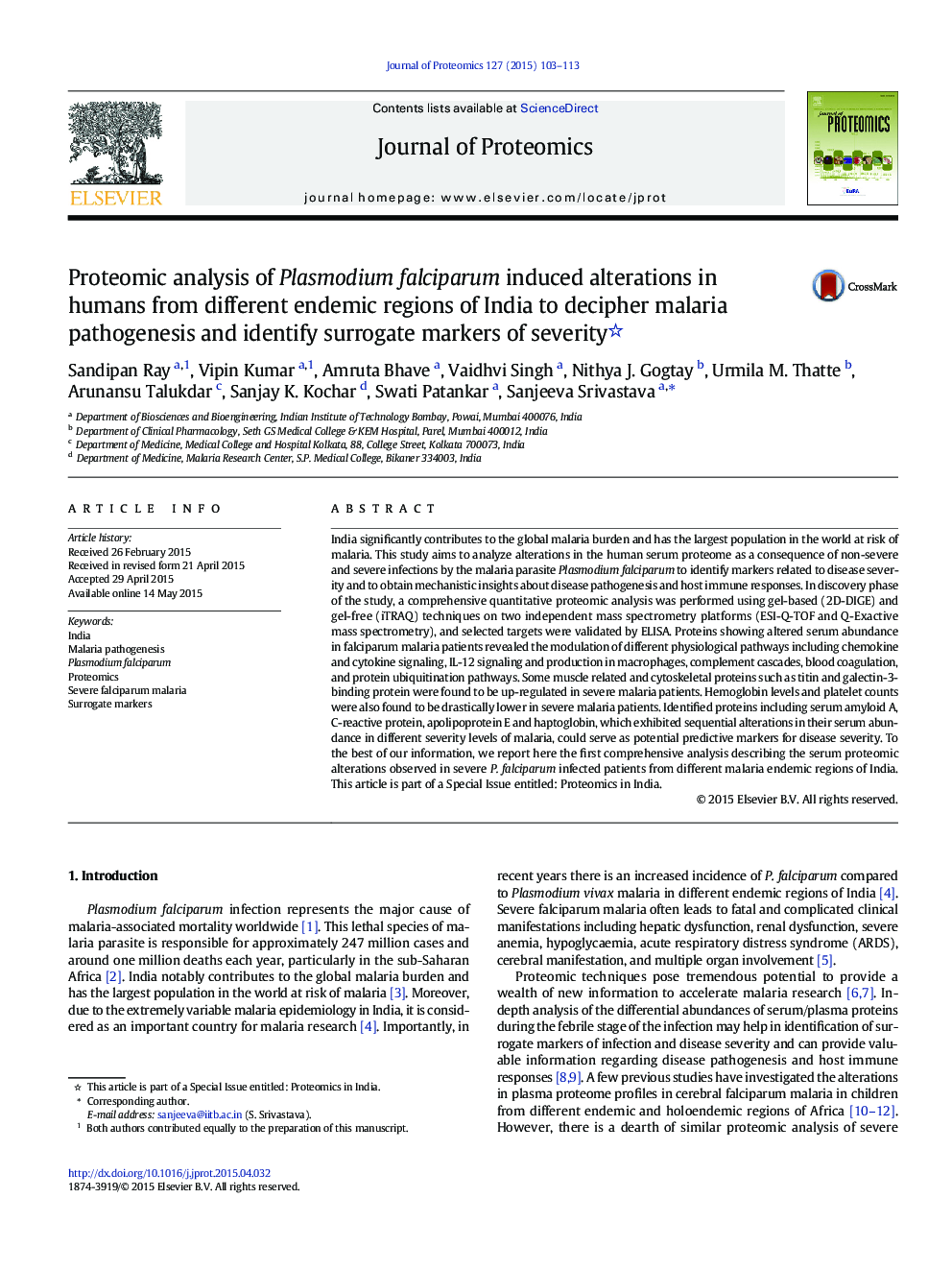| کد مقاله | کد نشریه | سال انتشار | مقاله انگلیسی | نسخه تمام متن |
|---|---|---|---|---|
| 1225317 | 968204 | 2015 | 11 صفحه PDF | دانلود رایگان |

• P. falciparum infection represents the main reason of malaria associated mortality.
• First report on proteomic alterations in severe falciparum malaria in Indian population
• 2D-DIGE and iTRAQ were performed for comparative quantitative proteomic analysis.
• SAA, HP, and Apo A1 are potential biomarkers for monitoring malaria severity.
• Vital physiological pathways are modulated adversely in severe falciparum malaria.
India significantly contributes to the global malaria burden and has the largest population in the world at risk of malaria. This study aims to analyze alterations in the human serum proteome as a consequence of non-severe and severe infections by the malaria parasite Plasmodium falciparum to identify markers related to disease severity and to obtain mechanistic insights about disease pathogenesis and host immune responses. In discovery phase of the study, a comprehensive quantitative proteomic analysis was performed using gel-based (2D-DIGE) and gel-free (iTRAQ) techniques on two independent mass spectrometry platforms (ESI-Q-TOF and Q-Exactive mass spectrometry), and selected targets were validated by ELISA. Proteins showing altered serum abundance in falciparum malaria patients revealed the modulation of different physiological pathways including chemokine and cytokine signaling, IL-12 signaling and production in macrophages, complement cascades, blood coagulation, and protein ubiquitination pathways. Some muscle related and cytoskeletal proteins such as titin and galectin-3-binding protein were found to be up-regulated in severe malaria patients. Hemoglobin levels and platelet counts were also found to be drastically lower in severe malaria patients. Identified proteins including serum amyloid A, C-reactive protein, apolipoprotein E and haptoglobin, which exhibited sequential alterations in their serum abundance in different severity levels of malaria, could serve as potential predictive markers for disease severity. To the best of our information, we report here the first comprehensive analysis describing the serum proteomic alterations observed in severe P. falciparum infected patients from different malaria endemic regions of India. This article is part of a Special Issue entitled: Proteomics in India.
Figure optionsDownload high-quality image (89 K)Download as PowerPoint slide
Journal: Journal of Proteomics - Volume 127, Part A, 8 September 2015, Pages 103–113